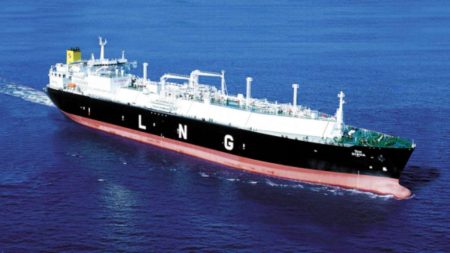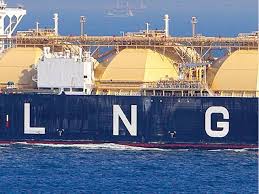 20 July 2013 – Australia’s natural gas industry is booming and the country’s economy will continue to grow because of it. By 2020 it’s expected that Australia will be the world’s second-biggest exporter of natural gas with a number of LNG projects currently on the board.
20 July 2013 – Australia’s natural gas industry is booming and the country’s economy will continue to grow because of it. By 2020 it’s expected that Australia will be the world’s second-biggest exporter of natural gas with a number of LNG projects currently on the board.
At present, the world’s first floating LNG plant is in production, and once finished it will likely be installed 500 kilometres off the west coast of Australia above offshore gas fields. The project, named Prelude, is going to contribute $45 billion to the Australian economy, according to Shell. And once Prelude is up-and-running (estimated to be in 2017) it will produce 3.6 million tonnes of LNG alone every year. This is enough to meet 90% of the annual energy demand of Hong Kong, one of the world’s most electricity-ravenous countries. This infographic is a simple introduction to FLNG and how it is unique in the energy mix. More information on the Prelude project and its effects on the environment and world energy demand can be found here.
Australia’s natural gas resources are in huge international demand and China is definitely hungry for it. While this Asian superpower has huge reserves of coal (enough to power their country for 220 years), it’s largely the middle-class who are driving the demand for a more environmentally-friendly energy resource. Coal is cheap and for China, in terms of a domestic energy source, it’s secure.
However, it emits huge amounts of CO2. In an effort to reduce greenhouse gas emissions, not only China but countries around the world are making changes to reduce their dependence on fossil fuels.
Australia is one of those countries. Currently, the government is working on finding alternative fuel sources, and this is where the likes of natural gas, oil and renewables shine. However, there’s currently no single energy source that can replace the expenditure of coal. And there’s also no perfect source of energy that has no negative environmental impacts.
By 2020, Australia is expected to have one of the greenest energy supplies for fuel. Perth is fast becoming a world hub for energy with large gas and oil resources found on and off shore. It’s estimated that onshore shale gas resources in Western Australia double those of offshore gas resources. But is there an environmentally-friendly way to tap into these reserves?
Natural gas is praised for emitting lower levels of CO2 than coal, but the methods of extraction and the process of transporting the gas to users is a concern for the environment.
Extracting gas and oil from the ground puts water sources at risk of contamination and building pipelines to carry the gas from its source to a manufacturer or industrial plant not only costs a lot of
money, but damages the natural environment. Shale gas is a prime example.
On a global scale, Western Australia has the fifth largest shale reserve in the world. Fracking is a way to tap into this natural resource and is currently being exploited in the US alongside horizontal drilling to extract the gas. But fracking comes with its own price to the environment. Through a loophole in legislation, Western Australia has been omitted from protection from fracking, the process of pumping water, sand and chemicals into the ground to crack shale gas rocks and allow the tapped gas and oil to rise to the surface. Those who oppose fracking believe that it has the potential to contaminate waterways and release significant amounts of methane into the air. Additionally, the need to build numerous pipelines to carry the gas from inland to the sea for transportation costs the environment too. However, the head of Western Australia’s Department of Mines and Petroleum was reported saying that WA’s “Barrow Island has had 750 frack jobs alone, and our monitoring before and after those fracks shows no issue at all”.
For the Prelude FLNG project, pipelines are not needed. This giant offshore carrier extracts the gas and harvests it on board before pumping it directly into a carrier which pulls up alongside the vessel. This carrier will then transport the gas to countries including China, Japan and Korea. However, those who oppose the idea cite possibilities of leaks, the potential to harm the underwater environment and two million tonnes of greenhouse gas emissions each year as reasons for their negative stance.
Renewable energy options are still being explored, but their high cost and possible environmental damage are still a major downside. Recently a proposal for a 100-turbine wind farm in Goulburn, NSW was rejected due to fluctuations in output from wind power, meaning power costs for consumers could increase.
The hard fact is that as the world’s population grows, so does the demand for energy and the world’s need to find a solution to cope with this. Something’s got to give.
*Chris Cooley



